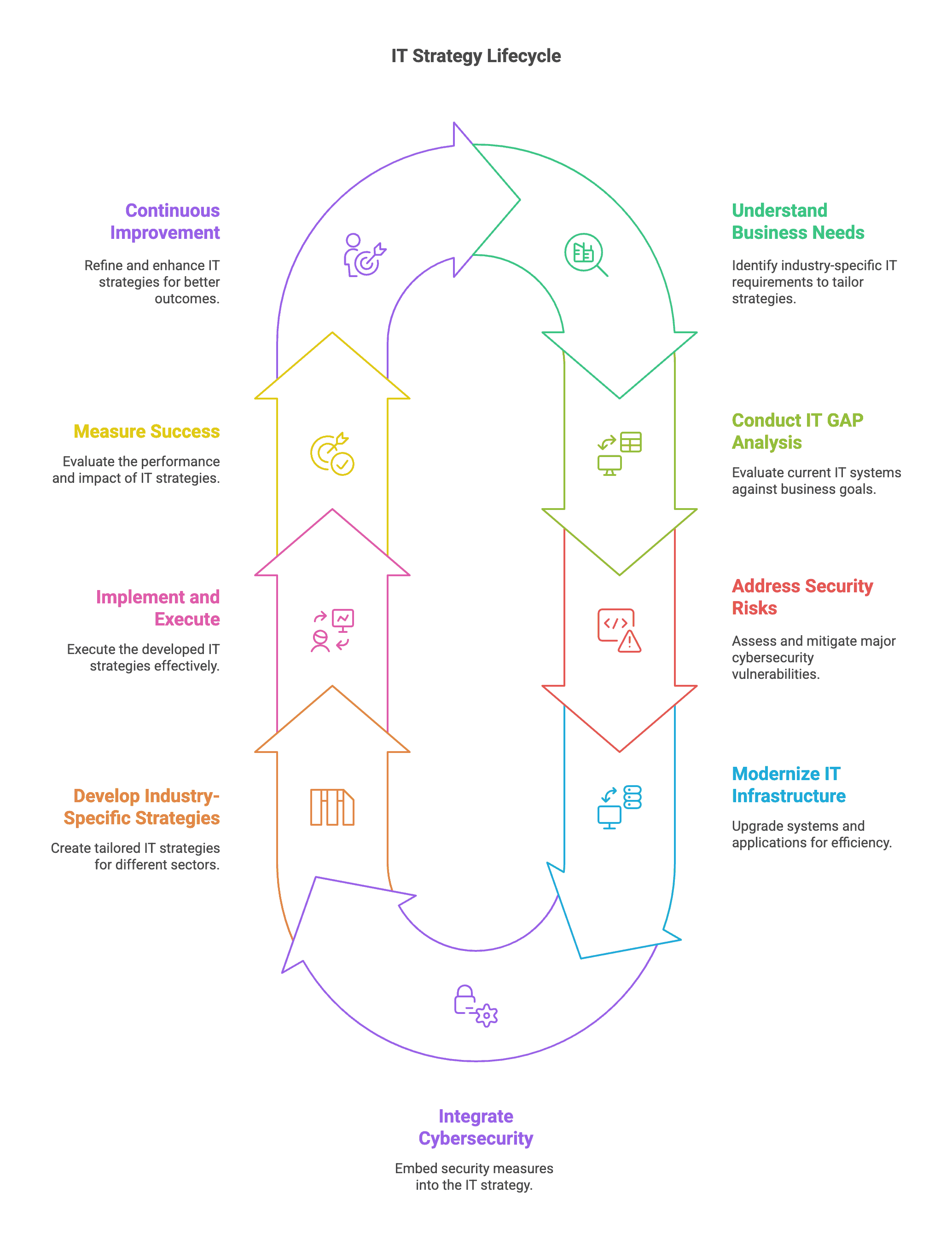Global Regulatory Change Isn’t Waiting...Are Your Compliance Risk Solutions Ready?
According to Thomson Reuters Regulatory Intelligence, in 2021, there were over 64,000 regulatory alerts across 190 countries, highlighting the speed...
8 min read
Heroic Technologies : Nov 18, 2024 9:00:00 AM

The holiday season brings unique challenges for organizations managing IT budgets. Increased demand for online services, heightened customer expectations, and the need for robust IT infrastructures strain financial resources.
As businesses ramp up their tech, IT spending is projected to reach USD 4.6 trillion by next year.
Key challenges include:
CIOs and CFOs must navigate these complexities while ensuring operational efficiency.
We’ll look into effective strategies that can help optimize IT spending during the holidays, allowing organizations to achieve significant cost savings.
IT cost management refers to the systematic process of planning, monitoring, and controlling IT expenditures within an organization. This practice is crucial for maintaining financial stability and ensuring that resources are allocated efficiently to support business objectives.
Common Challenges Faced by CIOs
CIOs frequently encounter numerous obstacles in managing IT budgets, including:
Budget overruns can have significant repercussions on business performance:
Effective IT cost management requires a proactive approach to forecasting and resource allocation, addressing these challenges head-on.
A thorough cost analysis is essential for effective IT cost optimization strategies. This process empowers organizations to gain a precise understanding of their financial commitments and avoid unexpected expenditures during the holiday season. A detailed cost analysis ensures that all potential expenses are thoroughly examined, which is critical in preventing budget overruns that can derail projects and compromise service quality.
Key aspects of a comprehensive cost analysis include:
For example, consider an organization evaluating cloud computing options versus traditional on-premises solutions. While cloud services may have lower upfront costs, a TCO analysis might reveal higher long-term expenses associated with data transfer fees or vendor lock-in scenarios. Such insights allow businesses to weigh their choices deliberately.
A cloud-first approach is a key strategy for organizations looking to optimize their IT costs during the holiday season. With the ability to scale resources up or down as needed, cloud computing allows businesses to meet increased demand without wasting money on unused resources.
To effectively manage cloud costs, consider implementing these tools and techniques:
Implementing automation and virtualization is a powerful strategy for reducing IT costs during the holiday season. These methods help organizations streamline their operations and improve efficiency, which directly affects their profits.
These strategies play a significant role in cost analysis and identifying total ownership costs. They enable organizations to maintain high service quality during peak demand while efficiently managing expenses.
Evaluating current software licenses is essential for organizations aiming to cut costs during the holiday season. Overspending on unnecessary features or licenses can significantly impact IT budgets. By assessing existing software agreements, businesses can identify underutilized licenses and eliminate excessive costs.
Employing these strategies will not only streamline expenses but also ensure compliance with licensing agreements. By focusing on software licensing optimization, organizations enhance their IT cost optimization strategies while preparing for increased demand during the holidays.
Conducting regular IT audits is essential for identifying wasteful spending patterns and inefficiencies that can accumulate unnoticed. Implementing systematic audits before the holiday season allows organizations to:
Effective vendor negotiation plays a critical role in IT cost optimization strategies. Building strong relationships with vendors can lead to:
Better Pricing Structures: Leverage negotiation tactics to secure more favorable terms and pricing, reducing overall IT expenses.
Tailored Solutions: Engage vendors in discussions about specific needs which may lead to customized offerings that align better with organizational goals.
Adopting these strategies helps organizations navigate the complexities of their financial commitments during peak seasons. Understanding the total cost of ownership is key in evaluating vendor contracts and ensuring alignment with budgetary constraints.
Establishing a disciplined budgeting process is essential for managing IT budgets during holidays. This approach ensures alignment with organizational goals while accommodating holiday-specific requirements. Here are key best practices:
Encourage collaboration among various departments to understand their unique needs during the holiday season. This insight allows for more accurate budget allocation and resource management.
Maintain open lines of communication between IT and finance teams. This practice fosters transparency and helps track spending against planned budgets, minimizing discrepancies.
Accurate forecasting plays a critical role in financial planning during the holiday season.
Utilize historical data to predict potential spikes in demand and corresponding IT resource requirements. This method enables businesses to allocate budgets effectively.
Allocate resources based on projected usage patterns. Ensuring adequate capacity to handle increased workloads without overspending is crucial for maintaining service quality.
Implementing these best practices not only optimizes IT expenditure but also enhances operational efficiency during one of the most challenging periods of the year for organizations.
Predictive maintenance is a strategic approach to reducing overall costs during busy holiday times. This technique uses data analysis and machine learning algorithms to forecast equipment failures before they happen. By identifying potential problems in advance, organizations can reduce the risk of unexpected downtime, which is especially critical during high-demand seasons.
Key benefits of predictive maintenance include:
Cost Reduction: Implementing predictive maintenance can lead to significant savings over time. Studies indicate that predictive maintenance can save between 8-12% compared to preventive measures and up to 40% when compared to reactive maintenance strategies.
Minimized Downtime: Holiday seasons often bring increased operational demands. Equipment failures during this time can severely impact service delivery, leading to customer dissatisfaction and lost sales. Predictive maintenance ensures that machinery is operating efficiently, reducing the likelihood of interruptions.
Optimized Resource Allocation: Organizations benefit from smarter resource management. By understanding when and where maintenance is needed, IT teams can allocate their resources more effectively, focusing on strategic initiatives rather than constantly addressing emergencies.
Consider adopting advanced tools that facilitate predictive maintenance:
IoT Sensors: Internet of Things (IoT) devices can provide real-time data on equipment performance. These sensors monitor conditions, alerting staff to any anomalies that may indicate potential failures.
Data Analytics Platforms: Utilizing AI-driven analytics platforms allows organizations to analyze historical performance data alongside real-time inputs. This capability enhances forecasting accuracy for equipment needs and schedules.
Automated Alerts: Setting up automated alerts for impending issues empowers IT departments to proactively address concerns before they escalate into costly repairs or replacements.
Transitioning to predictive maintenance not only promotes efficiency but also aligns with the overarching goal of cost optimization during holidays. As organizations strive for exceptional service delivery amidst increased demand, embracing these technology tools cultivates a robust infrastructure capable of withstanding the pressures of peak operational periods.
Understanding how to implement these techniques effectively will further enhance IT cost management strategies while ensuring business continuity throughout the festive season.
Using technology tools for cost optimization during holidays can have a significant impact on IT operations. Advanced cost management tools, such as AI-driven analytics platforms and automated budgeting solutions, provide organizations with innovative methods to enhance financial oversight.
Benefits of Advanced Cost Management Tools:
Organizations embracing these technologies can achieve greater efficiency and transparency in their IT operations, ultimately driving significant cost savings.
Implementing effective IT cost management strategies is critical for businesses looking to navigate the challenges of the holidays. The following approaches promise significant savings:
Start adopting these strategies immediately to maximize your potential savings on holiday-related IT expenditures. Proactive measures not only help control costs but also support financial stability during one of the busiest times of the year. Taking action today can significantly influence your organization’s bottom line tomorrow.
Organizations often encounter unforeseen expenses, lack of visibility into costs, and budget overruns, which can lead to delays in projects and compromised service quality.
Effective strategies include conducting comprehensive cost analyses, adopting cloud cost management practices, leveraging automation and virtualization, optimizing software licensing, and performing regular IT audits and vendor negotiations.
Adopting a cloud-first approach allows organizations to scale their resources efficiently while managing costs. Techniques such as rightsizing instances and utilizing spot instances can significantly optimize cloud spending.
Regular IT audits help identify wasteful spending patterns and inefficiencies, allowing organizations to address these issues proactively before the holiday rush.
Predictive maintenance minimizes downtime incidents caused by equipment failures, leading to reduced costs over time compared to reactive approaches. This is especially critical during peak holiday periods when operational efficiency is paramount.
Advanced cost management tools, such as AI-driven analytics platforms or automated budgeting solutions, provide real-time monitoring and control over IT expenses. This capability is vital for managing unpredictable fluctuations typically seen around festive times.

According to Thomson Reuters Regulatory Intelligence, in 2021, there were over 64,000 regulatory alerts across 190 countries, highlighting the speed...

Picture this: your client sends you their tax returns, medical records, and confidential business documents via email. They hit send, the files...
Picture this: It's 11 PM, and you're frantically searching for a critical deposition transcript that was "definitely saved somewhere." Your paralegal...

The legal industry operates where data integrity, confidentiality, and compliance are paramount. Portland managed IT has emerged as a crucial asset...

In 2025, small businesses will face a variety of IT challenges. Every business needs to keep up with fast-changing technology and deal with more...

In today’s digital-first business environment, having the right technology isn’t just an advantage—it’s essential for survival. Portland businesses...